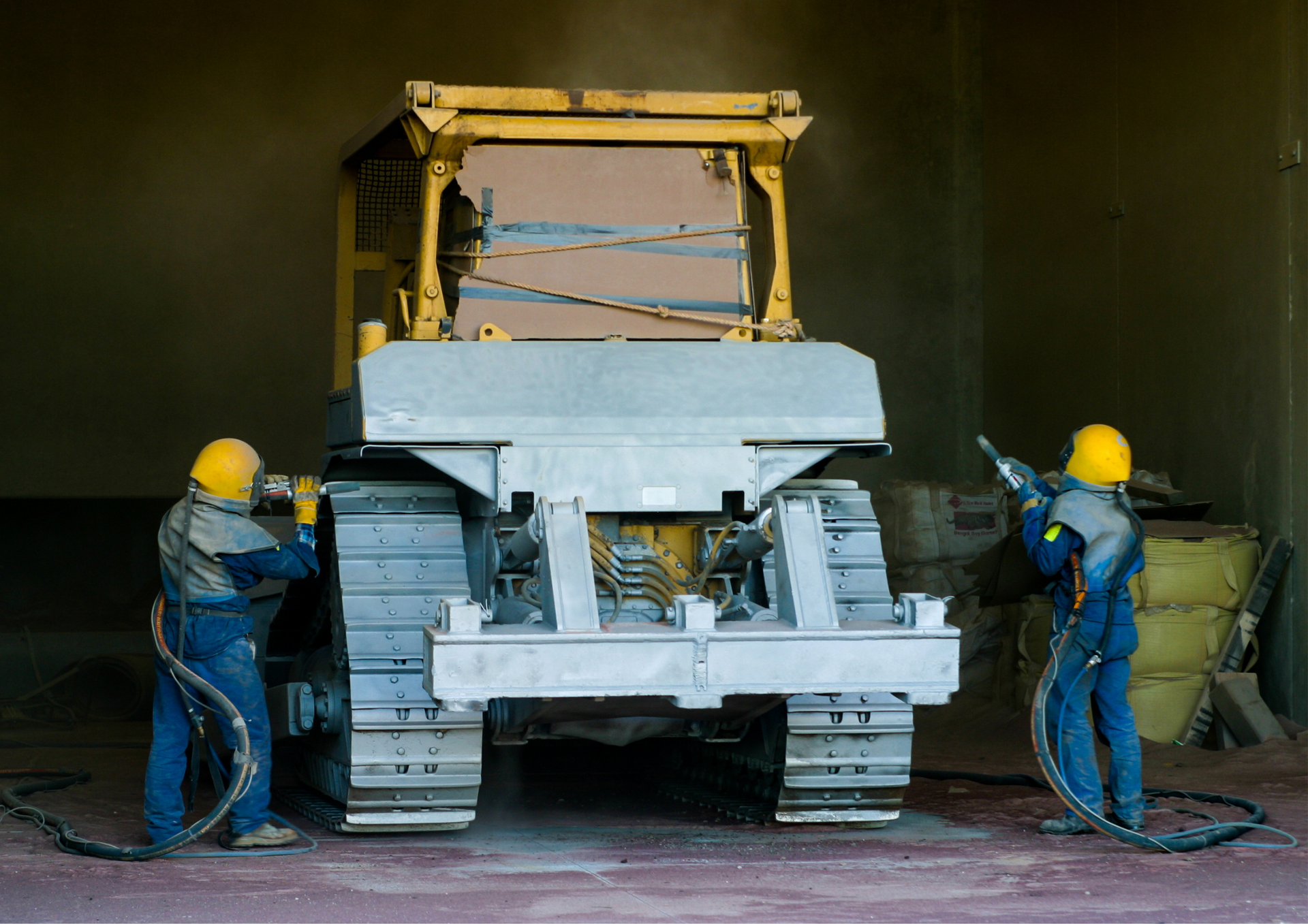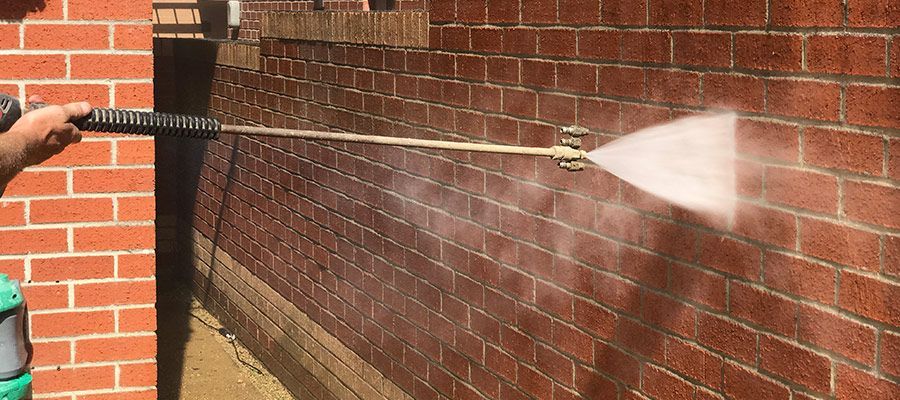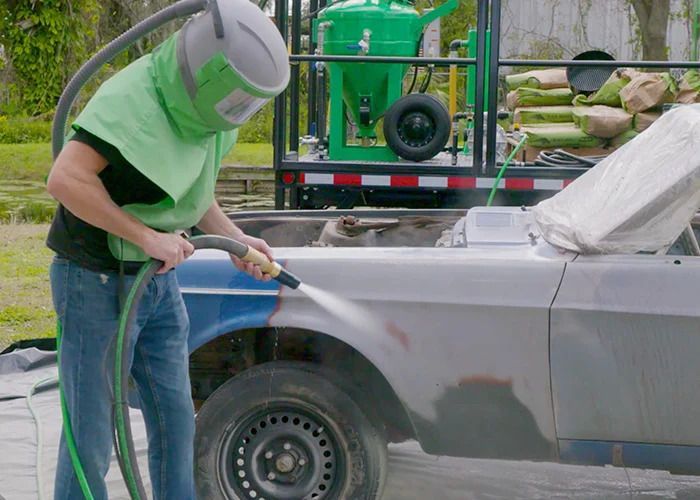Sandblasting for Concrete Surfaces: Enhancing Texture and Appearance
Concrete is a versatile and durable material widely used in construction. However, achieving the desired texture and appearance can sometimes be challenging. One effective method to enhance the look and feel of concrete surfaces is sandblasting. This technique improves the aesthetic appeal of concrete and prepares the surface for further treatments. In this blog post, we will delve into the process of sandblasting, its benefits, and how it can be utilised to enhance concrete surfaces.
Understanding Sandblasting
Sandblasting, also known as abrasive blasting, involves propelling fine particles at high speeds onto a surface to clean, smooth, or etch it. This process uses a blasting machine that directs an abrasive material, often sand, against the concrete surface. The force of the impact removes unwanted contaminants and roughens the surface, creating a texture that can improve the adhesion of coatings and paints.
Benefits of Sandblasting Concrete
1. Surface Preparation: One of the primary reasons for sandblasting concrete is to prepare the surface for further treatments. Whether it's for painting, sealing, or applying a decorative finish, sandblasting ensures that the concrete is free of dirt, oil, and other contaminants that can affect the adhesion of these materials.
2. Improved Aesthetic Appeal: Sandblasting can significantly enhance the visual appeal of concrete surfaces. By creating a uniform texture, it can help achieve a more polished and refined look. This is particularly beneficial for decorative concrete applications, such as stamped or stained concrete, where a consistent texture is crucial for the final appearance.
3. Enhanced Slip Resistance: Sandblasting can also improve the safety of concrete surfaces by increasing their slip resistance. This is especially important for outdoor areas like walkways, driveways, and pool decks, where wet conditions can make the surface slippery.
4. Versatility in Application: Sandblasting is a versatile technique that can be used on various concrete surfaces, including floors, walls, and architectural elements. It can be adjusted to achieve different levels of roughness, depending on the specific requirements of the project.
The Sandblasting Process
The sandblasting process involves several steps to ensure optimal results:
1. Surface Assessment: Before sandblasting, the concrete surface is thoroughly inspected to identify any existing damage or areas that require special attention. This helps in planning the sandblasting process and selecting the appropriate abrasive material.
2. Masking and Protection: Areas not requiring sandblasting are masked off to protect them from the abrasive material. This includes windows, doors, and other adjacent surfaces that could be damaged by the process.
3. Abrasive Selection: The choice of abrasive material depends on the condition of the concrete and the desired finish. Common abrasives include silica sand, garnet, and aluminium oxide. Each type has its own characteristics and is selected based on the specific needs of the project.
4. Blasting: The machine is set up, and the abrasive material is propelled onto the concrete surface at high pressure. The operator controls the pressure and angle of the blast to achieve the desired texture and cleanliness.
5. Cleaning and Inspection: After sandblasting, the surface is cleaned to remove any residual abrasive material. The concrete is then inspected to ensure that the desired texture and cleanliness have been achieved.
Types of Sandblasting Techniques
There are several sandblasting techniques used to achieve different finishes on concrete surfaces:
1. Open Sandblasting: This traditional method involves blasting the surface without any containment. It is effective for large areas but can create significant dust and debris, requiring extensive cleanup.
2. Wet Sandblasting: This technique involves adding water to the abrasive material to reduce dust and contain the spread of debris. It is ideal for projects in residential areas or indoor environments where dust control is a priority.
3. Micro-Abrasive Blasting: This method uses very fine abrasives and low pressure to achieve precise and delicate finishes. It is commonly used for detailed work on architectural elements and decorative concrete surfaces.
Applications of Sandblasting on Concrete
Abrasive sandblasting can be used in a variety of applications to enhance concrete surfaces:
1. Decorative Concrete: For decorative applications, sandblasting can be used to create intricate patterns and designs on the concrete surface. This includes etching logos, patterns, and textures that add a unique aesthetic appeal.
2. Surface Cleaning: Over time, concrete surfaces can accumulate dirt, grime, and stains. Sandblasting is an effective method for cleaning these surfaces and restoring their original appearance.
3. Surface Repair: Sandblasting can be used to remove damaged or deteriorated layers of concrete, preparing the surface for repairs and resurfacing. This is particularly useful for repairing cracks, spalling, and other surface defects.
4. Coating Removal: Old paint, sealers, and coatings can be difficult to remove from concrete surfaces. Sandblasting provides an efficient way to strip these materials, leaving a clean surface ready for new treatments.
Safety Considerations
While concrete sandblasting is an effective technique, it is important to consider safety measures to protect workers and the environment:
1. Personal Protective Equipment (PPE): Operators should wear appropriate PPE, including respirators, gloves, goggles, and protective clothing, to protect against inhaling abrasive particles and dust.
2. Containment: When sandblasting in confined or residential areas, containment measures should be taken to control dust and debris. This may include using tarps, enclosures, and dust collection systems.
3. Environmental Impact: Abrasive materials and debris generated during sandblasting should be disposed of properly to minimise environmental impact. This includes collecting and disposing of used abrasive materials according to local regulations.
Sandblasting is a powerful technique for enhancing the texture and appearance of concrete surfaces. Grit blasting offers numerous benefits when preparing a surface for further treatment, improving aesthetic appeal, or increasing slip resistance. By understanding the process and selecting the appropriate techniques and materials, you can achieve outstanding results for your concrete projects.
Choosing the right company for your sandblasting needs is crucial to ensure quality and safety. At Sandblasting Specialists, we pride ourselves on our expertise, attention to detail, and commitment to customer satisfaction. Our experienced team of sandblasters uses state-of-the-art equipment and techniques to deliver exceptional results for all your concrete sandblasting projects.
Check out our latest GBP update about concrete sandblasting.



